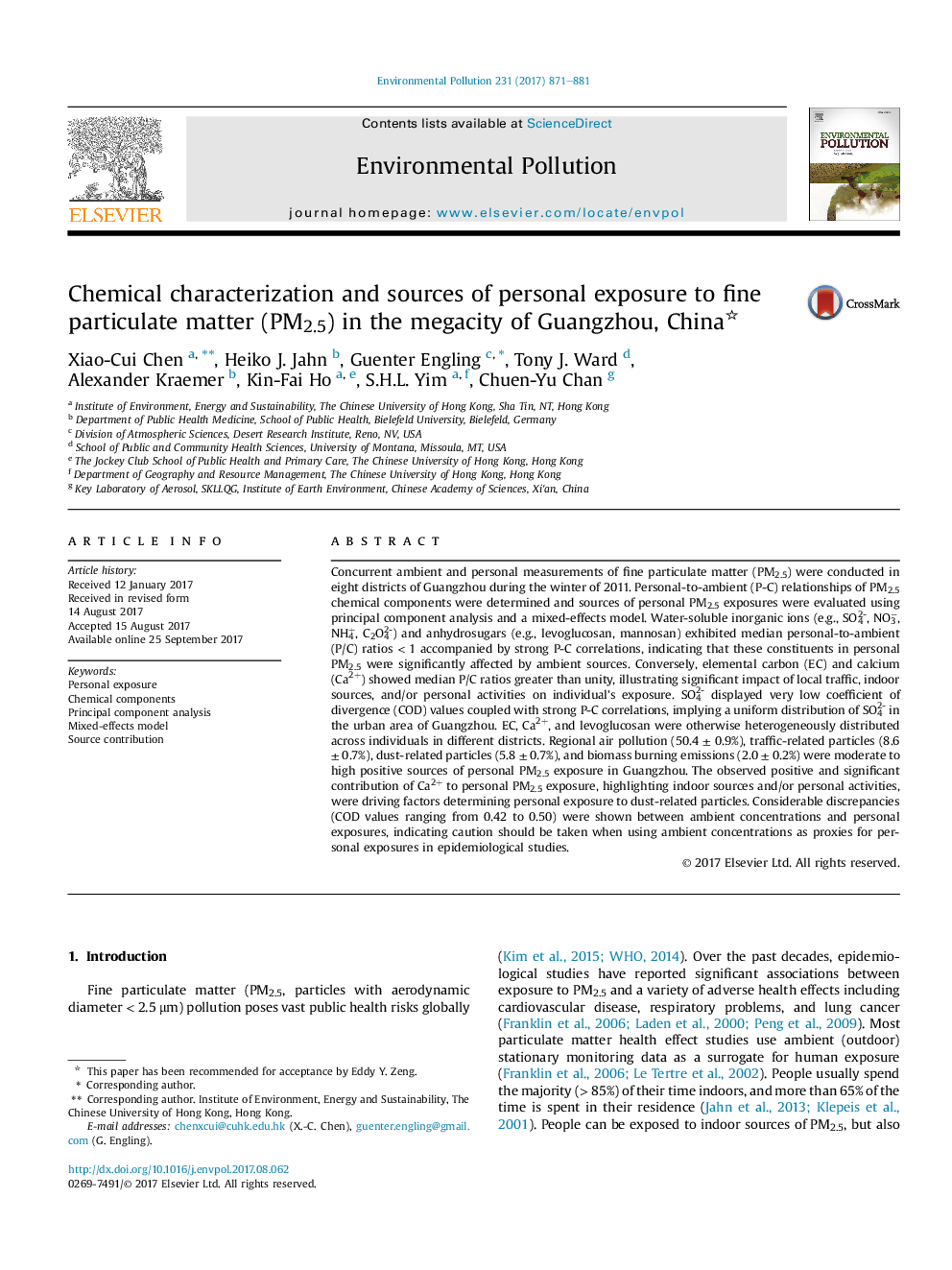| کد مقاله | کد نشریه | سال انتشار | مقاله انگلیسی | نسخه تمام متن |
|---|---|---|---|---|
| 5748625 | 1619142 | 2017 | 11 صفحه PDF | دانلود رایگان |

- Concurrent ambient and personal PM2.5 measurements were conducted.
- Moderate heterogeneity was shown between personal exposures and corresponding ambient concentrations.
- Non-ambient origin explained greater variability than ambient sources for personal Ca2+ exposures.
- Use of principle component analysis with mixed-effects model to characterize source contribution of personal PM2.5 exposures.
- Regional air pollution, traffic, dust, and biomass burning emissions were positive contributors to personal PM2.5 exposures.
Concurrent ambient and personal measurements of fine particulate matter (PM2.5) were conducted in eight districts of Guangzhou during the winter of 2011. Personal-to-ambient (P-C) relationships of PM2.5 chemical components were determined and sources of personal PM2.5 exposures were evaluated using principal component analysis and a mixed-effects model. Water-soluble inorganic ions (e.g., SO42-, NO3â, NH4+, C2O42-) and anhydrosugars (e.g., levoglucosan, mannosan) exhibited median personal-to-ambient (P/C) ratios < 1 accompanied by strong P-C correlations, indicating that these constituents in personal PM2.5 were significantly affected by ambient sources. Conversely, elemental carbon (EC) and calcium (Ca2+) showed median P/C ratios greater than unity, illustrating significant impact of local traffic, indoor sources, and/or personal activities on individual's exposure. SO42- displayed very low coefficient of divergence (COD) values coupled with strong P-C correlations, implying a uniform distribution of SO42- in the urban area of Guangzhou. EC, Ca2+, and levoglucosan were otherwise heterogeneously distributed across individuals in different districts. Regional air pollution (50.4 ± 0.9%), traffic-related particles (8.6 ± 0.7%), dust-related particles (5.8 ± 0.7%), and biomass burning emissions (2.0 ± 0.2%) were moderate to high positive sources of personal PM2.5 exposure in Guangzhou. The observed positive and significant contribution of Ca2+ to personal PM2.5 exposure, highlighting indoor sources and/or personal activities, were driving factors determining personal exposure to dust-related particles. Considerable discrepancies (COD values ranging from 0.42 to 0.50) were shown between ambient concentrations and personal exposures, indicating caution should be taken when using ambient concentrations as proxies for personal exposures in epidemiological studies.
224
Journal: Environmental Pollution - Volume 231, Part 1, December 2017, Pages 871-881